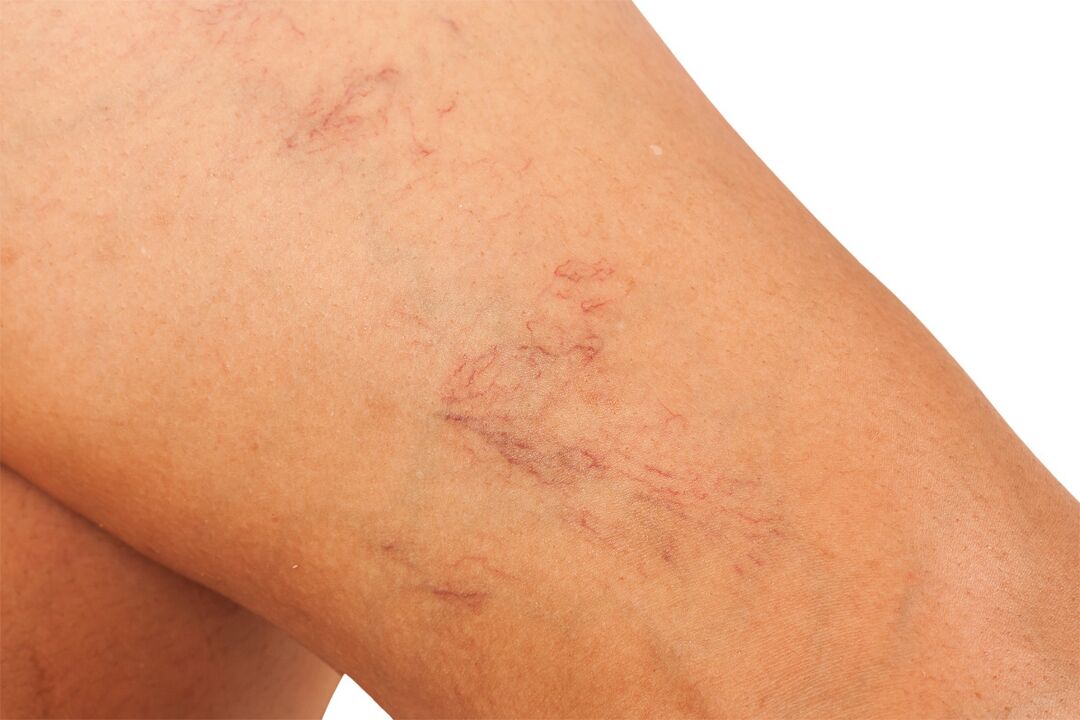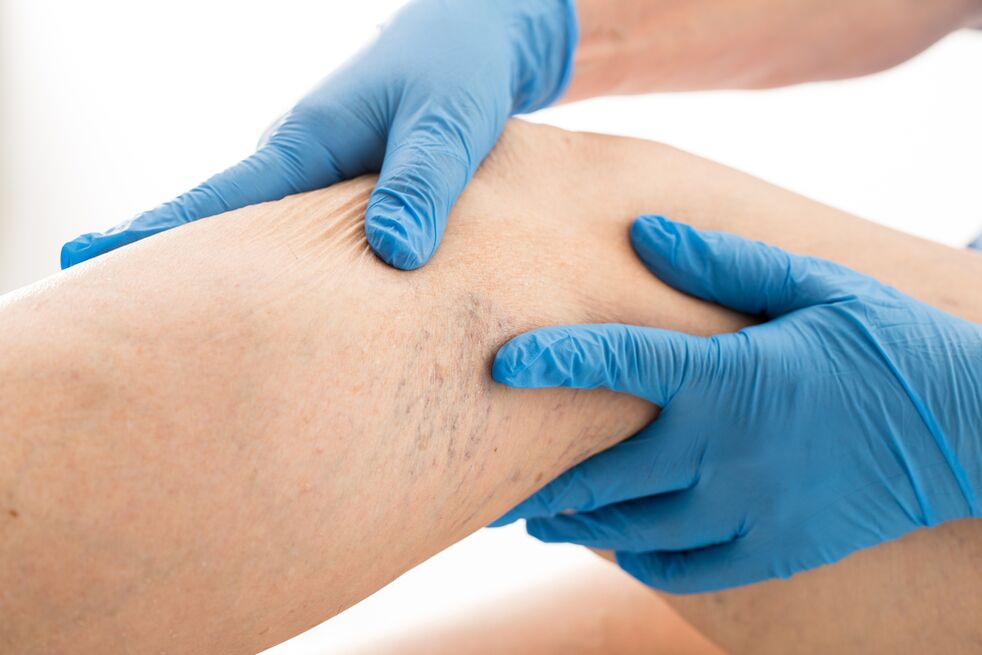Probably every third, even every second person today, suffers from leg varicose veins, or are easy to use. This has become a real disaster, especially when you consider the burden on your legs in today’s civilized world. You need to know which varicose veins are dangerous before the first sign appears.
What is varicose veins

Diversification on the legs is a chronic disease in which the veins on the legs expand, creating lymph nodes, so blood flow is disturbed while the blood remains in the venous system. In the disease, due to the blood flowing out of the blood, the cavity of the vein expands, and the valves of the veins on the legs can only make the blood flow through, which does not allow the blood to stagnate on the legs. If the work of this valve is disturbed, the blood will move in different directions and the legs will stagnate.
Causes of varicose veins on legs of men and women
First, among the causes of superior leg veins, it is called the hereditary tendency of the disease. If someone in your family has varicose veins on the legs, then the risk of getting sick is very high because the disease is due to the venous wall being one of the most common causes.
Varicocele on the legs is mainly a female disease, because wearing high heels greatly increases the risk. In addition, adding hormone vibration to the fire during pregnancy or menopause can also cause dilation of female veins.
Mostly, women with legs get sick after forty-five years, but often find it when they are young. Most commonly, in adolescents or young people, it develops due to information about the opening of the arterial fistula between the veins and the arteries.
The expansion of the upper leg vein on the legs is found in men according to the nature of the industry, which makes the legs occupy a large burden. This disease is often ill for people who live a sedentary lifestyle, spend a lot of time standing and not moving. Shoes that are inconvenient at close range, along with extra pounds, help to form stagnant. Liver diseases such as cirrhosis or hepatitis can cause varicose veins in the legs.
This disease is also common among athletes, suggesting that excessive physical exercise can also cause it.
Symptoms and signs
In the initial stages, the symptoms of varicose veins on the legs are not obvious, and the disease may be incredible. Or signs of veins swelling are obvious - the large tangled veins on the legs begin to stick out under the skin, but one doesn't feel any pain. Vienna can be shown gradually, gradually highlighting the skin, and after hard physical exercise or hard work. It happened that a person suddenly appeared after walking in the heat all day long.
However, if you notice the veins under the skin become thicker when you examine the lower leg, some places have knotted extensions, and when you stand up, the veins themselves swell and when you fall when you go to bed, you will most likely start varicose veins.
Another symptom is reduced swelling in sitting, standing, walking and reclining seat positions and swelling in the legs.
The bright feature of the disease is also pigmentation on the surface of the legs - the skin is compacted, becomes less elastic, and acquires a painful shine. In areas with such skin, hair will fall off.
The diversity features also have constant fatigue of leg fatigue, pain and burning. A person gets tired very quickly and sometimes finds convulsions.
Diagnosis and treatment: medication, operation, folk therapy
Variables can be diagnosed when experts check surgeons and check based on data from UZU veins. Vein relief was also performed, that is, contrast staining was introduced into the blood and the veins were then studied.
Treatment depends on the stage of the disease and whether the disease is accompanied by complications. Treatment can be based on conservative and surgical methods. Conservative means wearing stockings or tights and using drugs for internal and external purposes. Conservative treatments also include sclerotherapy and laser irradiation. In particularly complex situations, surgical removal of veins.

People with varicose veins in the legs should know that it is necessary to call the doctor urgently if the legs suddenly increase, fever and skin compaction occurs. This attack can be accompanied by a feeling of shortness of breath, lack of air, weakness and bleeding.
Expert opinion: What is this related to varicose veins? Severe venous dilation, thrombosis is thrombotic varicose veins. This disease can occur when the body temperature rises. Part of the blood clot may rupture and enter the pulmonary artery, which will cause shortness of breath and further develop severe life-threatening symptoms.
Do not treat at home in this case - call your doctor.
Of course, the most effective and radical way to treat varicose veins in the legs is to operate. If the conservative treatment is ineffective, then the action is taken. The essence of the surgery boils down to the fact that the surgeon removes the venous swelling through a small incision into the skin. The legs are then tied firmly together, and after a few hours, the patient can stand or even walk. This may be the only guaranteed way to get rid of the serious consequences of the disease.
Folk therapy can help treat or alleviate the patient's condition through traditional methods. Therefore, the main ingredients when creating ointments are:
- horse chestnut;
- kalanchoe;
- Sage;
- white willow bark;
- Mokrin;
- Selandin;
- cabbage.
Popular products based on animal fat, apple cider vinegar, beekeeping products (honey, propolis), body, clay and other ingredients will also help cure the disease.
The consequences of varicose veins
Varicocele in the legs cannot be retained by themselves and must be treated because the developed disease can lead to many unpleasant and sad consequences. Therefore, varicose veins can be complicated by eczema and dermatitis-inflammatory skin diseases in the legs, and the cause is precisely the stagnation of venous blood. Eczema is characterized by a redness-focused appearance on the skin, which has uneven edges, and itching and cracks or bubbles appear in these places.
Eczema of varicose veins can in turn develop into nutritional ulcers. Nutritional ulcers are also complications of varicose veins - it is an ulcer that cannot heal on the skin of the lower leg for a long time. Nutritional ulcers start with a shallow ulcer, characterized by bloody or clear liquid at the bottom. This is an extremely painful wound that can completely destroy a person's life - leading to life-invasion, sleep.
One of the most common complications of varicose veins in the legs is thrombotic varicose veins, which are inflammation of the vein, accompanied by the formation of blood clots or clots. Thrombotic varicose veins are usually accompanied by walking, fever, redness in the skin and severe pain when seals are formed. Use of thrombotic varicose veins may cause bleeding. In this case, it is necessary to call your doctor immediately.























